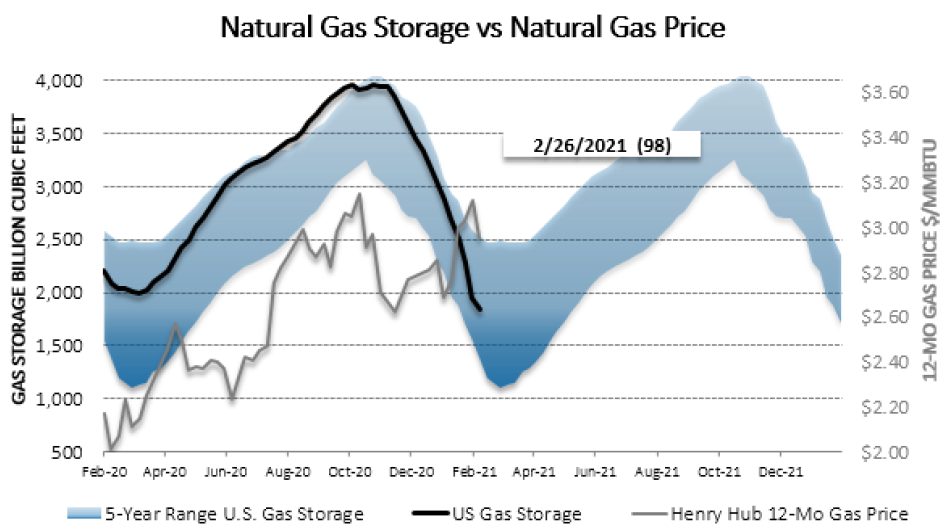POWER MARKETS

WEST The light precipitation in California has adversely affected snow pack levels, which now sit at only 59% of normal, and engineers are uncertain whether Diablo Canyon, the only nuclear facility left in California, will be online this summer as Unit 1 remains plagued by vibration issues. If precipitation does not substantially increase over the last month of winter and Diablo Canyon stays offline, 2,300 MW of reliable baseload supply will be in jeopardy this summer, exacerbating current supply concerns. Together, these two challenges have pushed the forward curve up for Q3 2021 and Q3 2022.
ERCOT Term prices have oscillated just above and below where they were last week. After last month’s hectic real-time price activity, the big move in the term mar-kets has been in the winter power strips (January-February), which have climbed by nearly $7.00/MWh since the beginning of February. Meanwhile, real-time prices have been relatively flat to open March, settling in the high $10s/MWh this week. Both load zone basis and the ORDC scarcity adder have been negligible for the month to date.
EAST Thousands of people across New England and New York lost power earlier in the week as high winds knocked down trees and power lines. However, although DART spreads were somewhat affected, prices have not reacted strongly overall. While wholesale prices in ISO-NE have hovered around $40-$50/MWh, LMPs across NYISO, PJM, and MISO have been clearing around $20-$35/MWh, low by historical standards.